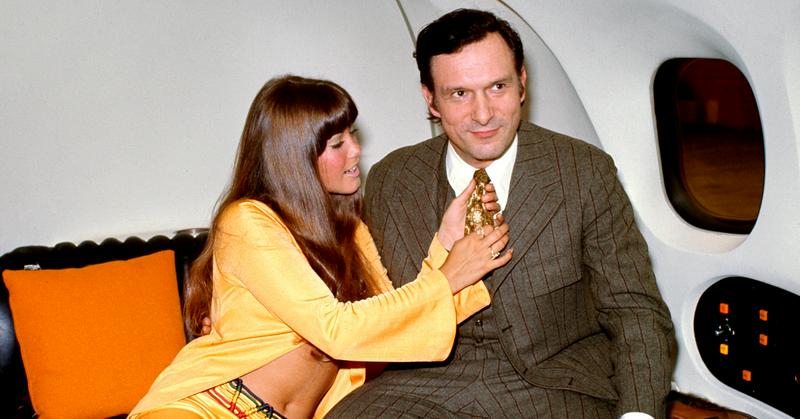How Hugh Hefner Created An Empire And A Hero Named Hef
By | November 29, 2016

Hugh Hefner, the Playboy founder and figurehead who died in 2017, achieved success by living the life he glamorized. A magazine offers a world view, and a lifestyle magazine -- whether it's Cosmopolitan, Maxim or Playboy -- describes a fantasy life. Sophistication, prosperity, beautiful women, intellectual stimulation and, yes, plenty of sex: this was the goal laid out for the readers in the pages of Hugh Hefner's Playboy, and this was the persona established by the editor-publisher himself. The world of Playboy Playmates, Playboy clubs, casinos, the Playboy Mansion, the Playboy jet, the Playboy Jazz Festival, and the largest men's magazine in the world featuring important coverage of important people -- in many ways, the man they call "Hef" was living out the fantasies of his youth. As he told the Los Angeles Times in 1992:
Much of my life has been like an adolescent dream of an adult life. If you were still a boy, in almost a Peter Pan kind of way, and could have just the perfect life that you wanted to have, that’s the life I invented for myself.

Hugh Hefner was born in April of 1926 in Chicago, Illinois, the son of two devoted Methodists. It's safe to say that publication was in his blood from a very young age. Hugh attended Steinmetz High School and although he didn't have straight A's he was somewhat of genius with a reported IQ of 152. Here his talents first began to shine when he founded a school newspaper which fueled his interest in publication. Soon after he made a comic book about teen who lived in a universe that he created.
From his early days, Hef was demonstrating two traits that served him well: Creativity and self-mythologizing. Hef created a world of his own that people found intriguing -- and in this world, the hero's name was Hef.

Before attending college, Hefner served in the United States Army for a couple of years until he was discharged. Now that he'd done his civic duty to his country he would prepare to do his civic duty to his fellow men.
After a summer program at the Chicago Art Institute, Hefner enrolled at the University of Illinois at Urbana-Champaign. After getting his bachelor's degree in psychology he went one step further and attended graduate school, but only for a semester. However, in that semester he studied work done by the sex research institute founded by Alfred Kinsey. His journey then brought him to Esquire Magazine in Chicago. After some time, Hefner and Esquire parted ways seeing that they couldn't agree on on the right amount of salary.

Everything up to this point had prepared Hugh Hefner for this moment, the moment he would start his own publication. Now this wouldn't be just any publication, no, it would be specifically for men. It took $8,000 to get the ball rolling on this publication from which he obtained from about 45 different investors including his Methodist mother and brother.
The first issue of Playboy hit the stands in 1953, a year Hefner would never forget. Even though the first issue was made from his home it proved successful thanks to a little something in the center of the magazine. To be more specific, this issue of Playboy prominently displayed a full colored photo of Marilyn Monroe in the nude. This was quite genius on Hefner's part, almost ensuring the first issue would be a success. From this moment on, every issue of Playboy flew off the stands, making Hef a very wealthy and popular man. It's safe to say men wanted to be him and certainly women wanted to be with him.

It didn't take long before the bunny with a bow tie and the man with pipe and silk jacket became the image of Playboy. By the '60s, Playboy had come to outsell Hefner's former employer and rival Esquire. Playboy also had become more than just an men's magazine; it was also an enterprise that included clubs, hotel resorts and modeling agencies. He even created the Playboy Foundation to fight censorship in hopes of fostering growth of his enterprise, and that it has.
Playboy and Hugh Hefner saw great success for decades, not only financially but also in American culture. Yes, the rabbit head has become one of the most-recognized logos on the planet -- but on a more intellectual level, Playboy played a part in a broadening of discourse. During his lifetime Hefner saw discussions about sexuality that were taboo in his youth come to be considered normal, and even healthy. Hefner fought numerous first-amendment battles. The jury remains out on whether Hugh Hefner was ultimately an empowering force for women or something else, but certainly there is plenty of evidence on both sides to fuel the debate for decades to come.
